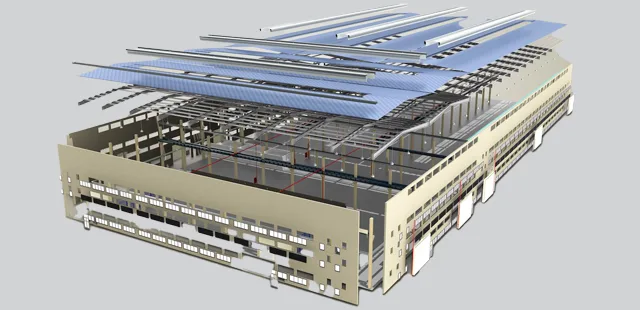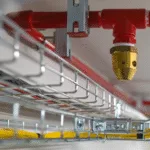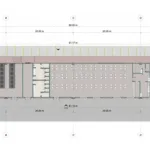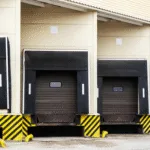julio 7, 2025
Trends in Industrial Warehouse Construction for 2025
In 2025, the industrial sector continues to evolve rapidly, driven by technological innovation, the need for operational efficiency, and the urgency to build more sustainably. Industrial warehouse construction is no exception. Companies of all sizes are rethinking their infrastructure strategies to adapt to new market demands, environmental regulations, and construction advancements.

Here are the key trends that will shape industrial warehouse construction in 2025:
1. Integration of BIM Technology
Building Information Modeling (BIM) is no longer optional it’s the new standard. In 2025, its integration goes further, enabling real time simulation, monitoring, and performance optimization even after construction is completed.
Key benefits:
- Greater accuracy in cost and scheduling.
- Fewer on site errors.
- Predictive maintenance and smart management.
2. Prefabrication and Modular Construction
Prefabrication and the use of modular components continue to gain traction thanks to their ability to accelerate construction timelines and reduce waste. Systems like tilt-up panels or precast concrete walls are becoming increasingly common in next generation industrial parks.
Advantages:
- Higher quality control.
- Reduced environmental impact.
- More efficient use of on site labor.
3. Sustainability as a Core Principle
Sustainability is no longer just a bonus it’s a market and regulatory requirement. In 2025, industrial warehouses will pursue certifications:
- Recycled or low impact materials.
- Rainwater harvesting systems.
- Renewable energy solutions (solar panels, LED lighting, natural ventilation).
4. Flexibility and Adaptive Design
Economic uncertainty and supply chain shifts are pushing companies to seek more versatile spaces. The warehouses of the future are designed to adapt easily to different production or logistics processes without major structural changes.
This means:
- Open, modular spaces.
- Variable ceiling heights.
- Infrastructure ready for future expansion.
5. Automation and Smart Warehousing
The integration of smart systems in warehouses is a key trend. The use of robots, IoT sensors, and inventory/fleet management software is expected to grow, enabling:
- Greater operational efficiency.
- Fewer human errors.
- Real time traceability across operations.
6. Safety and Structural Resilience
In response to increasingly intense and frequent natural events, structural resilience is becoming more important. In 2025, expect greater investment in high resistance materials, improved anchoring systems, and designs that ensure business continuity during earthquakes, floods, or other critical events.
Conclusion
Industrial warehouse construction in 2025 is defined by technology, sustainability, and adaptability. Companies that want to stay competitive must take these factors into account from the planning stage. Investing in modern infrastructure is no longer a luxury it’s a strategic necessity.
Planning a new industrial project?
At TESSIN, we help you build with a future ready vision.






